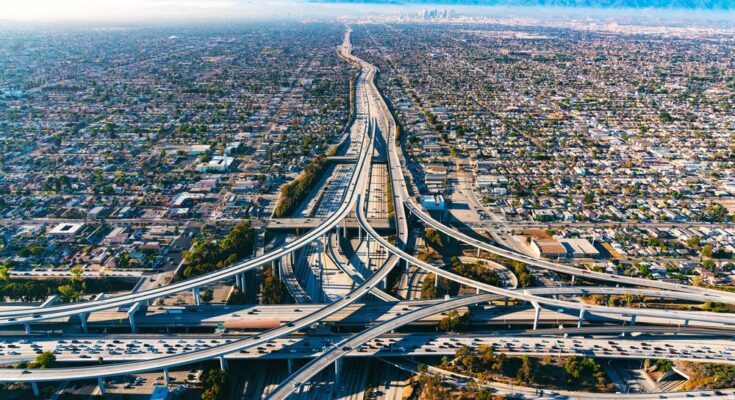In the bustling urban landscapes of Tokyo and Los Angeles, two distinct worlds of commuting exist. One city thrives on efficient public transportation, while the other is mired in the daily grind of car-centric travel. These differences underscore not only the unique transportation cultures of each metropolis but also reflect the broader challenges and opportunities in urban mobility.

Los Angeles, often considered the epitome of car culture, sees approximately 6.5 million daily car commuters. This staggering figure reveals the deep reliance on personal vehicles in a city defined by its sprawling urban design and vast road networks. Los Angeles was built with the automobile in mind, and its extensive freeway system is a testament to that. However, this car dependence also brings with it significant challenges. Traffic congestion is a daily reality, with long commutes becoming a norm for many. The city’s layout encourages sprawl, which means that public transit options are often limited, and for those who rely on them, the experience can be less than ideal. Despite efforts to expand the Metro system, public transit usage in Los Angeles remains relatively low compared to other major cities around the world. The convenience and flexibility offered by personal vehicles continue to overshadow the appeal of buses and trains, resulting in a commuting experience that is often slow, stressful, and time-consuming.

Tokyo, on the other hand, presents a stark contrast to the car-dominated reality of Los Angeles. With a population of over 13 million people in the city proper and a total metro area population surpassing 37 million, Tokyo is home to an impressive 8.7 million daily subway riders. This figure is not just a testament to the city’s size but to the effectiveness of its public transportation system, which is renowned for its punctuality, cleanliness, and coverage. Tokyo’s extensive network of trains and subways connects nearly every corner of the city, making it easy for residents to navigate without the need for a car. The city’s rail system is known for its frequency and reliability, with trains running every few minutes during peak hours, allowing commuters to reach their destinations quickly and efficiently. The system is also well-integrated with other forms of public transportation, such as buses and trams, ensuring seamless connections across the city.
![the end] Let's take the town of Tokyo in GW! -Photo exhibition "Tokyo 2019-2020 - North - by - disposable camera storing people, building, city of 100+20 people" | Event | Koto Travel Information Bureau](https://koto-kanko.jp/img_data/EV851_1.jpg?19700101090000)
What makes Tokyo’s public transportation system particularly remarkable is its cultural significance. While many cities around the world view public transit as a mere utility, in Tokyo, it’s an essential part of daily life. The city’s transportation network allows people to live in compact, walkable neighborhoods while still being able to easily access the sprawling urban areas. As a result, many Tokyo residents prefer public transit over private cars, as it offers a far more convenient and predictable way to get around. The absence of the daily traffic jams that plague other major cities is a testament to how well Tokyo has embraced the benefits of public transportation.
/cdn.vox-cdn.com/uploads/chorus_image/image/42522848/134002823.0.0.jpg)
This stark contrast in commuting habits highlights broader trends in urban mobility. Tokyo’s success story is a result of decades of investment in its public transport infrastructure, with ongoing efforts to expand and modernize the network. Meanwhile, Los Angeles faces a more complicated road ahead. The city’s heavy dependence on cars has led to challenges in improving the quality and reach of its Metro system. While there have been efforts to introduce more light rail lines and buses, car culture remains deeply ingrained in the city’s DNA. The task of convincing Angelenos to shift their mindset and embrace public transit is no small feat.

The differences between Tokyo and Los Angeles serve as a reminder of the importance of investing in reliable and efficient public transportation systems. As cities around the world continue to grow, addressing traffic congestion and reducing car dependency will be critical to improving urban livability. Public transit not only helps alleviate congestion but also contributes to environmental sustainability by reducing carbon emissions. For Los Angeles, the challenge lies in transitioning from a car-dependent culture to one that embraces public transportation as a viable and desirable option. For Tokyo, the challenge is maintaining and further enhancing its already exemplary system in the face of ever-growing demand.
Ultimately, the battle of commuting between these two cities offers valuable lessons in how urban mobility can shape the quality of life for residents. While Tokyo shows the benefits of a well-integrated public transit network, Los Angeles’s struggle with traffic and car dependency highlights the complexities of transitioning from a car-centric culture to a more balanced, sustainable transportation future.



